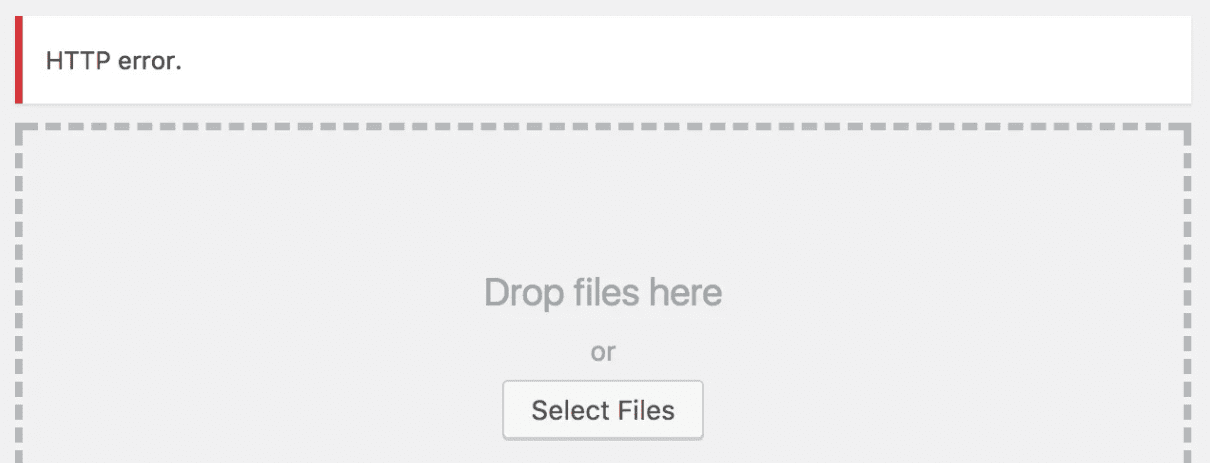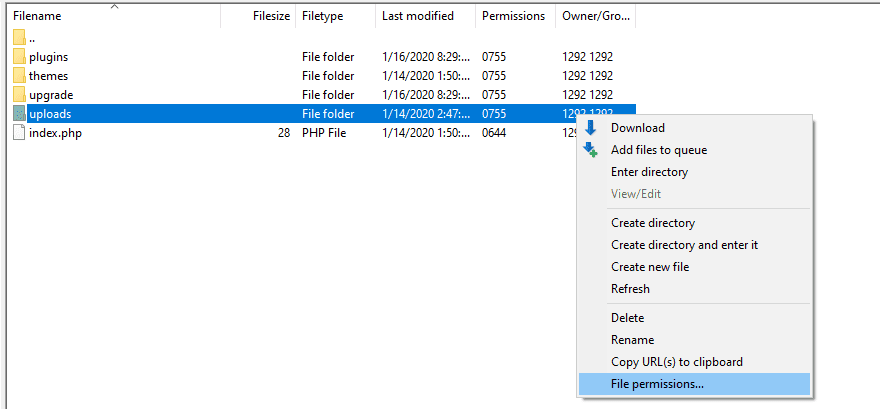It’s hard to have a successful website without visual content. Any page you visit likely includes some combination of photos, icons, or graphics. However, if you encounter the HTTP error when uploading images to WordPress, you may find yourself unable to incorporate them on your site.
Fortunately, there are several methods you can use to fix this issue. In this article, we’ll explain why the HTTP error occurs when uploading images to WordPress and then walk you through six solutions.
Let’s get to work!
Subscribe To Our Youtube Channel
- 1 What Causes the HTTP Error When Uploading Images to WordPress
-
2
How to Fix the HTTP Error When Uploading Images to WordPress (6 Proven Methods)
- 2.1 1. Check if Your Login Session Has Expired
- 2.2 2. Rename, Optimize, or Resize the Image File
- 2.3 3. Increase Your Site’s PHP Memory Limit
- 2.4 4. Verify Your Upload Folder Permissions
- 2.5 5. Troubleshoot for a Plugin or Theme Conflict
- 2.6 6. Contact Your Web Host About the HTTP Error When Uploading Images to WordPress
- 3 Conclusion
What Causes the HTTP Error When Uploading Images to WordPress
Compared with some other common problems, the HTTP error when uploading images to WordPress doesn’t look all that scary. It’s just a simple banner message that can appear in your media library when you try to add a new file:

Usually, when you upload an image to WordPress, it shows up in your Media Library right away. There’s no confirmation message or bells and whistles. That’s obviously not the case when you run into this error.
The problem with this particular alert is it doesn’t give you a lot of information to go on when it comes to figuring out a solution. Plus, there are several possible causes, including:
- Expired login credentials
- Unauthorized file names
- Insufficient memory
- Incorrect file permissions
- Plugin conflicts
Half the battle with the HTTP error when uploading images to WordPress is determining the source of the problem. Once you figure that out, it’s just a few quick steps to resolve it and get your site back in working order.
How to Fix the HTTP Error When Uploading Images to WordPress (6 Proven Methods)
Although fixing this error isn’t difficult, you have to be methodical since it has several potential causes. With that in mind, we’ll start with the most straightforward fixes.
1. Check if Your Login Session Has Expired
Usually, WordPress lets you know when your login credentials expire so you can re-enter them. However, this message doesn’t always appear if you’ve left your browser open for an extended period of time without any activity.
If you do this and then try to upload an image, you’ll see an HTTP error like the one pictured above even though you haven’t been prompted to log back in. The easiest way to figure out if this is the problem in your case is to reload the page.
If your previous login session expired, WordPress will then prompt you to input your credentials again. After that, you can retry your image upload and see if the error persists.
2. Rename, Optimize, or Resize the Image File
WordPress doesn’t support files with special characters or language accents in their names, such as in château or smörgåsbord. If the image you’re trying to add to your site includes any, try renaming it, then attempt the upload again.
In some cases, even images with perfectly ‘clean’ names won’t play nice with WordPress. You can try and find an image optimization plugin that may help you out. Another workaround is to use an image optimization platform such as TinyPNG:

This tool compresses your files to decrease their size. It’s a simple way to cut down your website’s loading times, and will sometimes resolve the HTTP error when uploading images to WordPress as well.
Finally, you may also be able to resolve this issue by changing your image’s dimensions (width and height). You can do this using your preferred photo editing platform, such as Preview, Paint, or Photoshop.
3. Increase Your Site’s PHP Memory Limit
If the first two methods don’t resolve the HTTP error when uploading images to WordPress for you, it’s time to start looking into more technical solutions. Depending on your web hosting provider and plan, your server might not have enough memory to add more files to your site.
A small PHP memory limit can lead to the occasional HTTP error during uploads. As a rule of thumb, you want yours to be at least 256 MB.
The easiest way to increase your PHP memory limit is to access your website’s root folder (usually public_html) using File Transfer Protocol (FTP) and an FTP client such as FileZilla. Then, locate your wp-config.php file, right-click on it, and select the View/Edit option:

Inside that file, look for the line that reads “That’s all, stop editing! Happy publishing.” Then add the following code above it:
define( 'WP_MEMORY_LIMIT', '256M' );
Save your changes and close the file. Then try re-uploading your image and see if the HTTP error persists. If it does, your host may be overriding the settings in your wp-config.php file at a server level. In that case, you might need to contact support for further assistance.
4. Verify Your Upload Folder Permissions
Every folder in your WordPress installation uses what are called ‘permissions’. That means there are strict instructions in place for who can access (‘read’), modify (‘write’), or execute scripts in the files each directory contains.
As the site owner, you should have full permissions for the wp-content/uploads directory, which is where WordPress stores (as you may have guessed) uploads. If you run into the HTTP error in your Media Library, it’s worth checking if this setting is configured correctly.
First, access your website using FTP as we described above and navigate to your wp-content directory. Find the uploads folder, right-click on it, and select the File permissions option:

In the resulting window, check if you (the ‘Owner’) have read, write, and execute permissions. The corresponding Numeric Value should be 755:

If you don’t have the proper permissions, select the correct checkboxes or set the Numeric Value to 755 and click on the OK button. Then try uploading your image again.
5. Troubleshoot for a Plugin or Theme Conflict
In some cases, one of your plugins or your active theme might be causing conflicts in the background when you attempt to upload an image. There are two ways you can troubleshoot this problem, but before you do anything else, make sure you have a recent backup in place.
Then, navigate to your Plugins list in your WordPress dashboard and disable them one by one, testing if you can upload images between each. This approach is simple, but it can be cumbersome if you have a lot of plugins.
If you want to rule out a plugin conflict altogether, you can access your server via FTP and go to your wp-content directory. Find the plugins folder and rename it to something else, as in the example below:

Changing the name of that directory will prevent WordPress from finding your plugin files, disabling all of them in one fell swoop. Test if that fixed the HTTP error when uploading images to WordPress.
If it did, then you’ll know there’s a conflict somewhere on your site. Return the folder to its original name and proceed to disable your plugins one by one from your dashboard until you find the culprit.
On the other hand, if disabling all your plugins didn’t fix the error, return the plugins folder to its original name and try changing your active theme:

Any other theme will do, although a default one is usually best for troubleshooting. Make the change, and once more try uploading an image. If the error is resolved, you’ve found the source of the conflict.
If your theme or a specific plugin is behind the HTTP error, then you’ll have to remove it from your site. You can then replace it with an alternative, or attempt to contact the developer about resolving the conflict.
6. Contact Your Web Host About the HTTP Error When Uploading Images to WordPress
If all else fails, don’t despair. You’ve ruled almost every possible cause of this issue, so now it’s time to bring in some help so you can dig deeper.
At this point, you’ve exhausted most of the options on your end. Go ahead and open a ticket, start a live chat, or call your web host and see if they can help you track down the source of your HTTP error when uploading images to WordPress.
Conclusion
No one likes walls of text on the web. You need visual elements on your site if you want to publish content that visitors enjoy. That means that if you ever run into the HTTP error when uploading images to WordPress, you need to identify and fix the underlying issue as quickly as possible.
In this post, we covered six approaches you can take when it comes to fixing this error:
- Check if your login session has expired.
- Rename, optimize, or resize the image file.
- Increase your PHP memory limit.
- Verify your upload folder permissions.
- Troubleshoot for a plugin or theme conflict.
- Contact your web host for further help.
Do you have any questions about how to fix the HTTP error when uploading images to WordPress? Leave them in the comments section below!
Article thumbnail image by vladwell / shutterstock.com









Php memory limit caused my own issue and everything work fine immediate as i increased it via WHM, thanks a lot for this.
I am facing this problem, the explanation is very helpful. Thank you very much
What about “mixed files” error by a HTTPS website?
We actually have a whole separate article on that: https://www.elegantthemes.com/blog/tips-tricks/2-ways-to-fix-the-wordpress-mixed-content-error
Usually it is a folder permissions issue…
Here is what I set my folder permissions to for a WordPress install. .
wp-content (775)
wp-content/uploads (775)
The key here is that wp-contents get set to 755 and inside of that folder is “uploads” folder which also gets set to 755.
Search “wp-content” permissions to see commands you need to use.
This is really helpful. Thank you so much.
CAN I UPLOAD 10 MB FILE